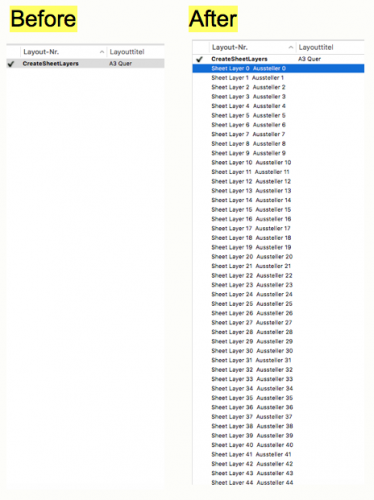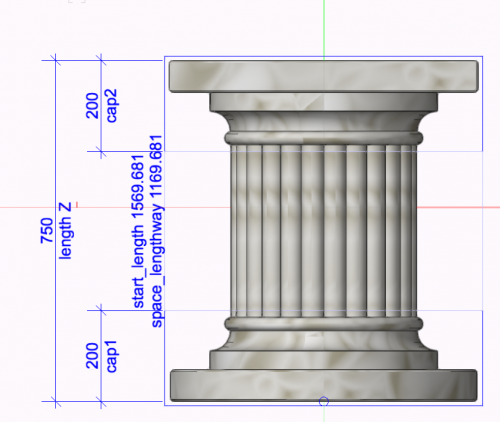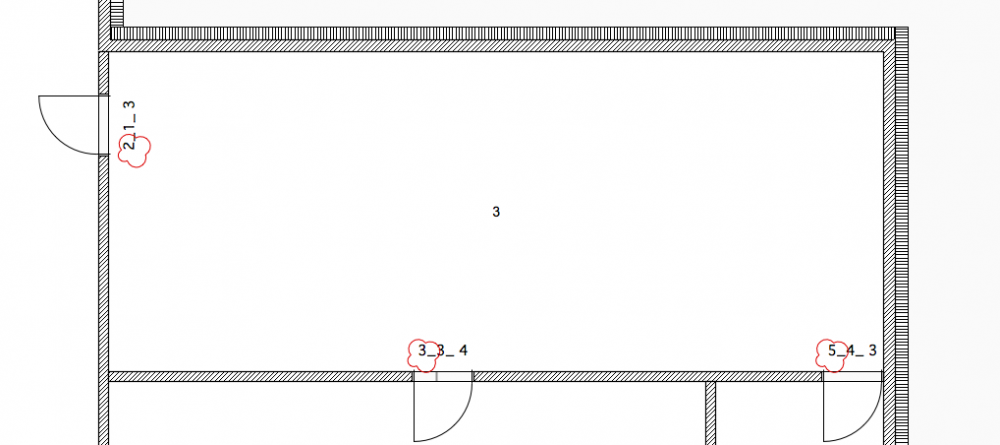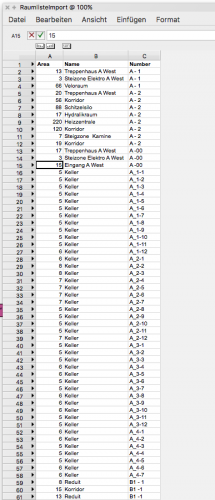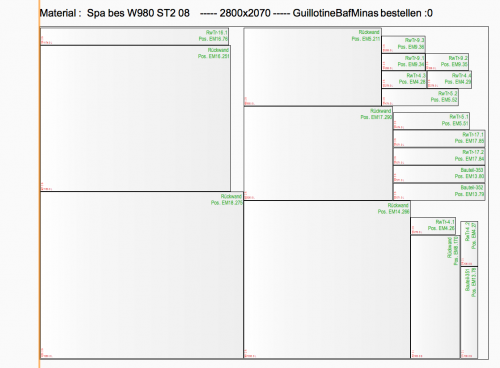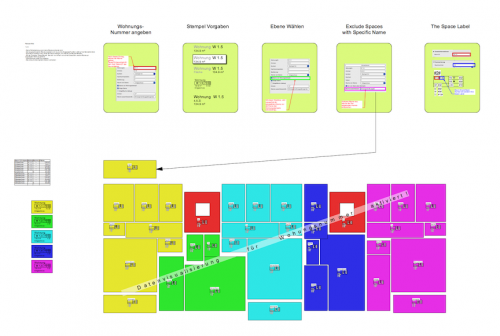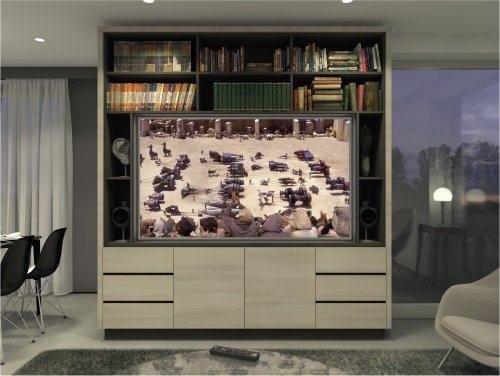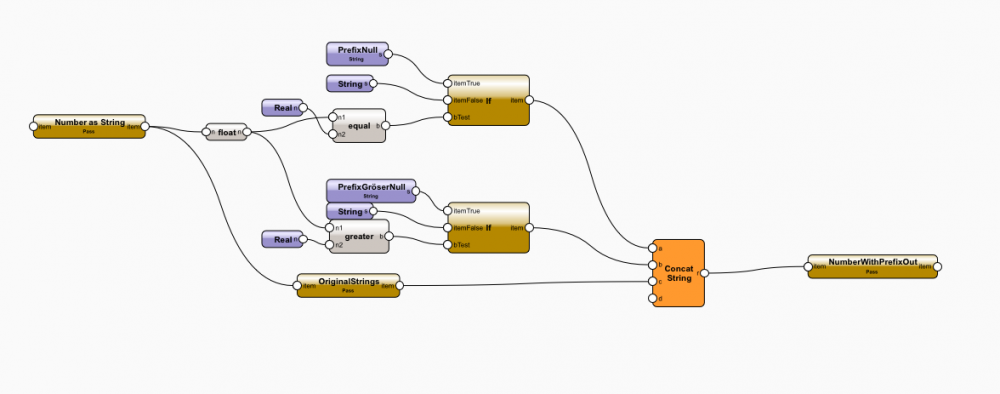-
Posts
605 -
Joined
-
Last visited
Content Type
Profiles
Forums
Events
Articles
Marionette
Store
Everything posted by DomC
-
@Luisa I am back from vacation so sorry for late reply. Basically this Example do the following: 1. Collect Objects in the drawing with the criteria node 2. Read some informations of the objects and put them together with a viewport on different sheet layers. 3. additionally it creates a title block with some informations about the object You can do this for all objects independent if they have a record or not. It is just an example. Because it is a Marionette feature you could enhance or change, what the script should do (Maybe group all spaces from one layer on the same sheet layer, maybe collect additionally informations from objects which are in the space or on bound of the space, etc. etc.) To your question: All spaces are already linked to a record format (Datenbank). Specific the Example with the spaces, uses the room Number for naming the sheet layers. Also it reads data for write them to the title block. If your spaces have not the informations as the script excepts (No Room Number, No Name etc.) it maybe will not run. So if your spaces and informations are not the same type as in this example the script has to be fit to your space informations. You could share some of your spaces, that would help understanding if an issue appears
-
Hi Pier The Node used the outdated vs.GetType() command which do not work in 2019 and also produced wrong handles in 2018. New Versions uploaded. I fixed this long time ago but forgot to update this here in the forum. Beside that, this node is in use in several real live projects (as Example the fassade (Window Elements with additional frame and all ifc informations) below is made with this)
-
The Question seems not to be very common (I was not able to find something similar in the script forum). The Attached Scripts converts the selected symbols to groups and attach the colors of the symbol to that group. Made to fix some incompatibility with DWG Block Colors. Maybe some one else can use it. The Attached File contains two Scripts 01 > attaches class colors, 02 > attaches colors from the attribute palette. Symbol to Group Attributes.vwx Symbols2GroupColors.mp4
-
Hi I am not sure, if I unterstand it right: 1. If you have a door from room_1 to room_2 you want to have 1_1_2 2. If you have a second door from room_1 to room_x you want to have 1_2_x If you want this, it will in my opinion make something you maybe not want to have. Because room_1 and room_2 values follow the stacking order. Or if you just count unique ID same room-room pair (which normally will counts one if not two doors connects the same room pair ) As Example you have 100 doors from hallway to rooms. It will not automatically count all 100 doors to the hallway position. Did you already solved that point? Ideas: Sort by room number etc. to get a reproducable order. Also we could solve that if you get the wall direction of the parent wall of the door and look the banding of the door. So you could see, in which room the door opens. If you have a door without opening, it will be hard to deside, from which room you get to another room. You have to build a complexe network of room-room connection which sort parent room (defined somehow by entrances etc. -could be very complexe(impossible for us) I think) and child room. Or you just get the door opening circle or another indicator and check if this is in another room By the way back to your counter: You don't store x, y, and number in a global list and reset them to zero every new door in your door iteration. So it is hard to check which ID are already used by another door. Don't would think about this till the first point is not clarified.
- 1 reply
-
- 1
-

-
Hi As far as I know on Windows it is stored in the Registry in Current User and on Mac in the User/Library/Preferences. I am not sure if this works in your situation. With python I think it is easier to get access to the system files. Maybe this also would work with a pascal script ... Windows: from winreg import * aReg = ConnectRegistry(None,HKEY_CURRENT_USER) aKey = OpenKey(aReg, r"Software\Nemetschek\Vectorworks 24\General") WGF_Path = QueryValueEx(aKey, "Workgroup Folder 0") #vs.Message(WGF_Path[0]) target = WGF_Path[0] Macintosh: import plistlib MacFile = 'Users/userName/Library/Preferences/net.nemetschek.vectorworks.2019.plist' pl = {} with open(MacFile, 'rb') as fp: pl = plistlib.load(fp) vs.AlrtDialog(str(pl.get("NNA Workgroup Folders"))) vs.AlrtDialog(pl["NNA Workgroup Folders"]) I needed this for a quick and dirty job. For sure it could be enhanced as Example by not using a fix path for the user Name: import getpass var_username = getpass.getuser()
- 1 reply
-
- 1
-

-
-

Filling up your spaces automatically with symbols
DomC replied to DomC's topic in Resource Share - Marionette
@tismacfan2 Hi Think you should edit the "Get Record Field" node and paste the content of the 2019 "Get Record Field Node". Specific the vs.GetType(h) function should be replaced with vs.GetTypeN(). That issue hits every Marionette Script which were using SetRecordField and GetRecordField. Attached an Updated File Best Regards Dominique Symbol on Space v2019.vwx -
Version 1.0.3
122 downloads
A Marionette PlugIn, that collects a custom drawing (font character, picture whatever) and refer it to a regular font character. This "Font" is placed into the control geometry container. Also we could just use a blue symbol. The Heart of the script is a custom node "create font dict" which manage collecting the control geometry. Also it returns a dictionary sequence data type. A dictionary is very useful if you want to have pairs of data. In this case a character and a drawing group with informations forms a pair. Sure, the script could be improved by several things (multi-line, alignment, page based etc. ) But I think it is very useful to have that plug in. Have fun with it. Maybe you can share your own fonts and your wonderful handwriting here. Thanks. Usecases: 1. Handwriting Font 2. Vectorfont (ability to use sketch view) 3. For Milling Machines 4. Fast inserting of object sequences 5. ... Update v2019 1. Script Crashed if input Geometry was None (Integrated a script blocker and an Alert Dialog ) 2. Input Dict was always None, because use of an outdated Script command (vs.GetType() instead vs.GetTypeN()). Issue in many other scripts. One of the very rare incompatibilites of Script commands the past Years. -
There is a Script on the "VSSM Vorgabe.sta" which changes Title Blocks from an external File. If you create your vwx in an external software you can attach a txt which contains this data. With the same system, you can attach data for other PlugIns (like the cabinet you use). So you maybe define your cabinet in the external software, then click there on a button which creates the vwx (from different templates maybe) which contains your cabinet. Then Double click the script and set the dimensions of your cabinet to the exported values. Can save some seconds for your drawing. Seems like this is the kind of script you want to have. Not have much time for this (I think after a answer of your initial question you would like to create more than one cabinet per file or maybe want to attach other kind of date (which is not part of the Object Info Palette and which we maybe can change or maybe not like Position Number and stuff like this ). Maybe you could use Layer Name for position Numbers and export the layer name with a custom cutting list export configuration. I can give you a start with the following script (Filename.vwx and Filename.txt in the same Folder) then the Columns "Breite", "Hoehe", "Tiefe" which are translated to a dictionary you can easy call in the script. This Example will change the first object in the Layer (which maybe not suffice but it is just an example not a solution). The better you can descripe any details and specifications and post examples and previous work the better you will get answers from the community. If you invest some of your time you maybe are able to change some part of a relatively simple script like this. pathVWFile = vs.GetFPathName() path = pathVWFile[:-3]+'txt' skipHeader = False asString = True delimiter = "\t" codex = 'iso8859_2'#'latin_1', 'iso8859_2', 'mac_latin2','utf_8' lines = [] rows = [] import csv import os if asString==False: quote = csv.QUOTE_NONNUMERIC else: quote = csv.QUOTE_NONE if os.path.isfile(path) == False: vs.AlrtDialog('Importdatei wurde nicht gefunden') #vs.AlrtDialog(path) rowNum = 10 lineNum = 10 if os.path.isfile(path) ==True: with open(path, encoding=codex) as f: reader= csv.reader(f,dialect='excel',delimiter=delimiter,quoting=quote) if skipHeader==True: next(reader) for line in reader: lines.append(line) lineNum = len(lines) rowNum = len(line) for row in range(rowNum): rown = [] for line in range(lineNum): rown.append(lines[line][row]) rows.append(rown) if asString == False: rows = tuple(tuple(x) for x in rows) rows = list(rows) lines = tuple(tuple(x) for x in lines) lines = list(lines) erpdict = dict(zip(lines[0], lines[1])) h = vs.FActLayer() Record = 'XG Cabinet' #vs.AlrtDialog(str(erpdict)) vs.SetRField(h, Record, 'Width', erpdict.get('Breite')) vs.SetRField(h, Record, 'Height', erpdict.get('Hoehe')) vs.SetRField(h, Record, 'Depth', erpdict.get('Tiefe')) vs.ResetObject(h) PIO Parameter by external File.mp4 KorpusmöbelExterneDatenquelle.zip
-
Hi Urs The short Answer: Sure, this is possible but maybe not possible for a first scripting exercise. You can load data from a Textfile and you can attach Data to a PlugIn Object. I also pretty sure this question was asked for another plugIn (PlugIn is PlugIn A window and a cabinet makes not difference) before in the forum. Where to start: - What is the exact result you want to have. You want to create as example 1000 PIOs as Symbols from an external file? - Do you want to read a textfile and attach the values to a PlugIn Object in the drawing? Why you want to do this? - Do you know the Vectorworks Data Sheet? You could list your PluIns and change values in the Data Sheet or paste it from external list. So the start would be to know exactly what the final result should be and which workflow now seems not fast enough to invest time in a script. Similar Projects: Maybe take a look in the Marionette Corner. If you want a textScript, you can learn from the code inside the nodes, it is the same. 1. Import a text File: https://forum.vectorworks.net/index.php?/files/file/116-create-record-from-external-file/ 2. How to create PlugIns from such a list https://forum.vectorworks.net/index.php?/files/file/81-spacesfromlistvwx/ 3. Create a Symbol https://forum.vectorworks.net/index.php?/files/file/120-create-symbol/
-
-
Hi Onyx It is everything possible, what we can also solve with Vectorworks functions. The Question here is, how to make views from a single furniture and hide all others. The standard workflow I recommend here is, to draw every single position on different layers. So we are able to work on every furniture/position undisturbed from the rest of the drawing. Also we can rotate them in a front view to work on it. Then make Design layer viewports from this furniture and assemble it on a master view. That's the way I would structure it. From your structure it maybe could be solved as following: 1. Different classes for every furniture. Maybe automated class-naming with the position descreption or furniture name and then Automated layout with class visibility. Or 2. Sections around the furniture. But I am missing my KnowHow how to make sections with a script and also the issue is, that the sections will cut the furniture which is beside the required furniture. So #1 or a better Idea could be a base for a Marionette automation.
-
@Gescher Hallo Ich kann mir das gerne anschauen. Es gibt zwei Tabellen-Inputs. Einerseits die Teileliste, andererseits eine Plattenliste um für verschiedene Materialien, verschiedene Plattengrössen zu definieren und um zu sehen, welche Platten bestellt werden müssen. Wobei man auch bei der Lager-Liste Stk 1 verwenden darf, wenn man das nicht braucht. Also Board-List ist der Platten-Lagerbestand und Stückliste-Küche ist die Stückliste. Es könnte dann Fehler geben, wenn die Spaltenreihenfolge nicht stimmt, die Zahlen mit Komma getrennt sind (7,1 statt 7.0). Poste doch mal Deine Beispieldatei und Beispieltabelle.
-
- 6 comments
-
- parametric
- symbol
-
(and 1 more)
Tagged with:
-
Post removed: (Wrong Thread, sorry)
-
Hi Generally this are common issues: 1. If you have a String of 0.30000 and want to have have a string output from 0.30 you can youse x[:4]. The first 4 character of the string. If you have 100.45987 you will get 100. with this formula. If you use x[:-2] the last two characters are lost. To Prevent this, you could first split the string in number and digit and then operate with this. 2. Sometimes there are Units like m2 mm m qm etc. 3. Sometimes we want to have prefix like +. - and +- etc. 4. Sometimes there are , instead . of decimal seperators. The attached Nodes, addresses all of this common issues. Simple issues, but relatively complexe to solve. I attached some node to solve them. The error message you got is because to substract two items from a list (a string is like a list '0', '.', '0', '0' etc. or a list of numbers will be [0,5,3,4.5,]). So with a Number of 0.30000 it will not work, this is just one item. You could convert to string str(x)[:-2]. Then it would work. Do not know what mapping is doing. If it converts the string of 0.3 in a number it Maybe by standard makes again 0.300000 in the IFC Export. You see, not so trivial. I Recommend using the Attached Node Digits from string and try with this. Set Digits From String.vwx
-
@Luise It hard to intercept every bug in other components but I think this Update will fix it: 1. Uses 11_Area which seems to be m2 instead of cm2 2. separate numbers from unit and can handle , as dezimal delimiter. 3. Returns 0 for Bottom elevation if elevation is negative (can't fix this, maybe I could by getting the IFC elevation height, but I don't want to) You can try the attached Update File it will work without error Message Apartment Area v1.2.1 v2019.vwx
-
-
As Marissa mentioned 1. Replace code inside "Get Record Field", which is from 2016, use an outdated vs.GetType() command and is not update-ready. 2. I would solve the prefix with the if node: 3. I would try to keep the symbol record format workflow. Because it is so much easier to change the look of your stamp. 4. Uploaded an update of my example here:
-
Hi There is an update. The "VP Layer Visibility" has no bug. It just set the same visibility in all created vp. So not very usefull for creating more than one viewport with different visibilities. However I made this node new. It works now with different input sequences. So every created vp can have different visibilities.
-



